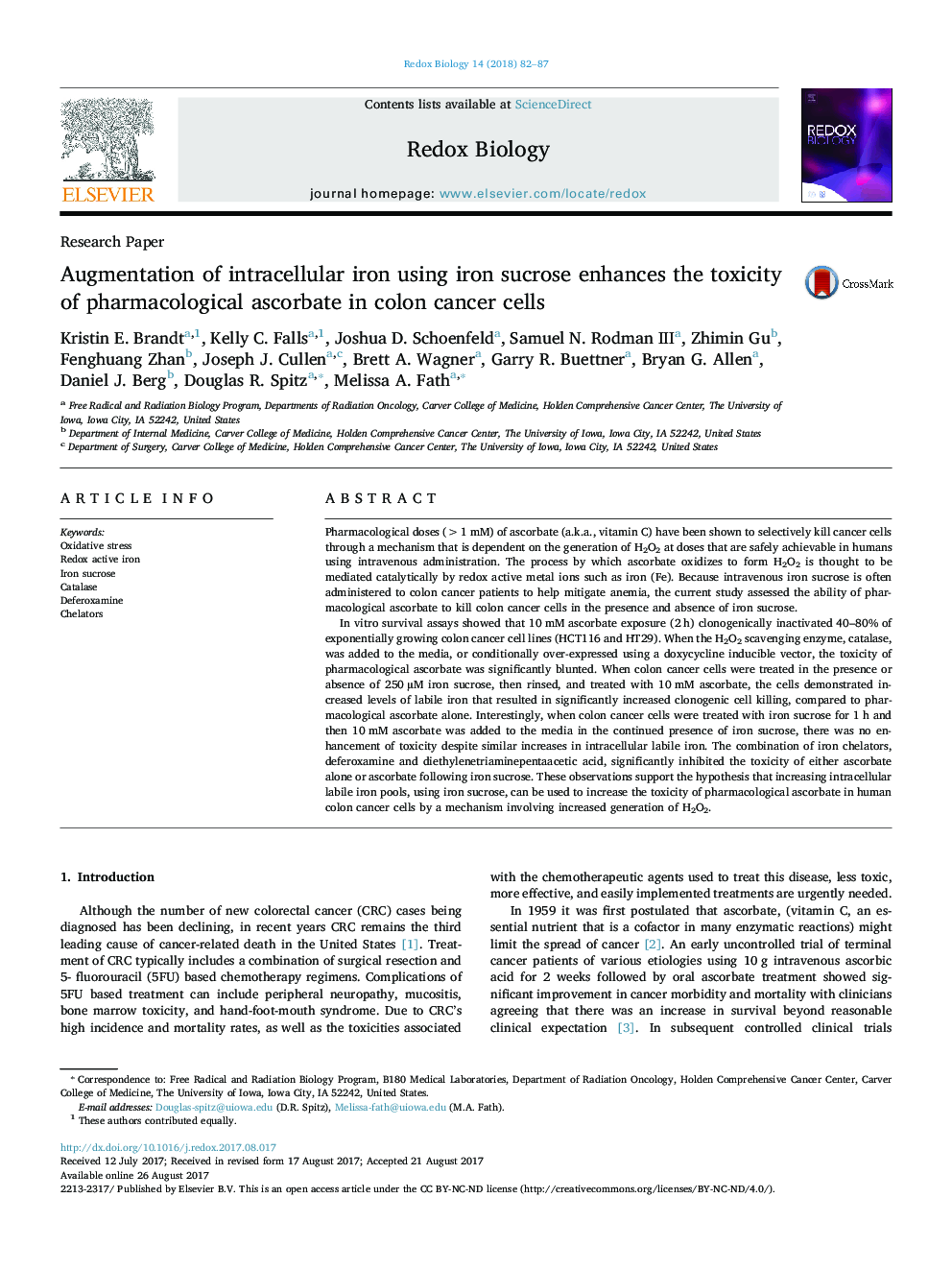| Article ID | Journal | Published Year | Pages | File Type |
|---|---|---|---|---|
| 8286749 | Redox Biology | 2018 | 6 Pages |
Abstract
In vitro survival assays showed that 10 mM ascorbate exposure (2 h) clonogenically inactivated 40-80% of exponentially growing colon cancer cell lines (HCT116 and HT29). When the H2O2 scavenging enzyme, catalase, was added to the media, or conditionally over-expressed using a doxycycline inducible vector, the toxicity of pharmacological ascorbate was significantly blunted. When colon cancer cells were treated in the presence or absence of 250 µM iron sucrose, then rinsed, and treated with 10 mM ascorbate, the cells demonstrated increased levels of labile iron that resulted in significantly increased clonogenic cell killing, compared to pharmacological ascorbate alone. Interestingly, when colon cancer cells were treated with iron sucrose for 1 h and then 10 mM ascorbate was added to the media in the continued presence of iron sucrose, there was no enhancement of toxicity despite similar increases in intracellular labile iron. The combination of iron chelators, deferoxamine and diethylenetriaminepentaacetic acid, significantly inhibited the toxicity of either ascorbate alone or ascorbate following iron sucrose. These observations support the hypothesis that increasing intracellular labile iron pools, using iron sucrose, can be used to increase the toxicity of pharmacological ascorbate in human colon cancer cells by a mechanism involving increased generation of H2O2.
Related Topics
Life Sciences
Biochemistry, Genetics and Molecular Biology
Ageing
Authors
Kristin E. Brandt, Kelly C. Falls, Joshua D. Schoenfeld, Samuel N. (III), Zhimin Gu, Fenghuang Zhan, Joseph J. Cullen, Brett A. Wagner, Garry R. Buettner, Bryan G. Allen, Daniel J. Berg, Douglas R. Spitz, Melissa A. Fath,
